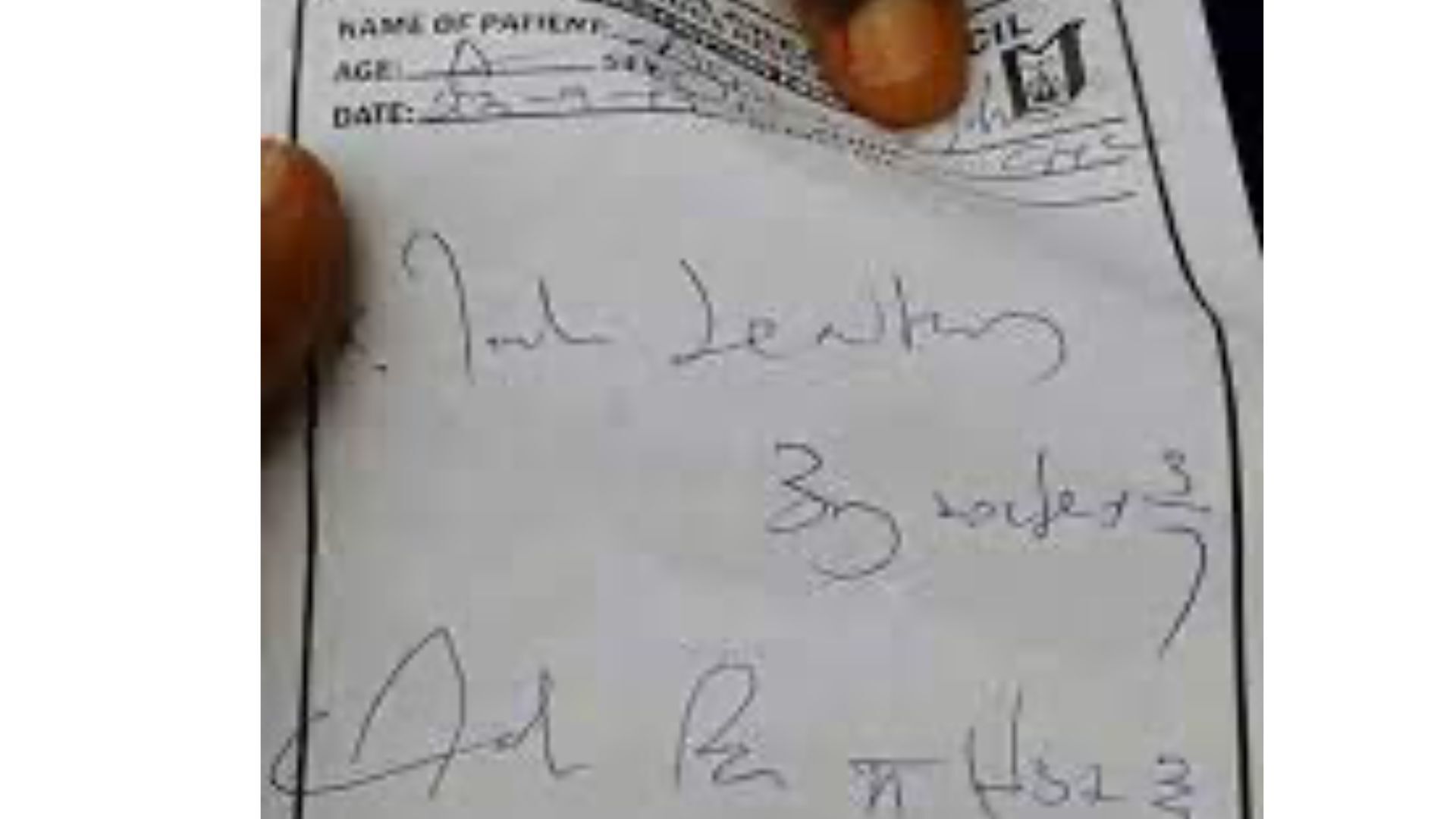Politics
Indian Court Demands Clear Handwriting in Medical Prescriptions

The Punjab and Haryana High Court has made a significant ruling, declaring that a “legible medical prescription is a fundamental right.” This decision highlights the critical nature of clear handwriting by doctors, which can be a matter of life and death. The ruling emerged from a case presided over by Justice Jasgurpreet Singh Puri, who discovered that a medico-legal report written by a government doctor was entirely unreadable. Justice Puri expressed his shock, stating that “not even a word or a letter was legible,” and criticized the ongoing reliance on handwritten prescriptions by government doctors.
In response to this alarming situation, the court has instructed the Indian government to implement handwriting lessons in medical education and to transition to digitized prescriptions within the next two years. Until these measures are enacted, all doctors are required to write prescriptions in clear, capital letters to prevent potentially dangerous errors.
This ruling has reignited a long-standing public debate regarding the notoriously poor handwriting of doctors, a topic often joked about in India and beyond. Yet, medical professionals assert that the implications of illegible prescriptions are no laughing matter. Poorly written prescriptions can lead to misdiagnosis, incorrect medication, and even fatalities.
According to Dr. Dilip Bhanushali, president of the Indian Medical Association (IMA), which represents over 330,000 doctors, most urban practitioners have adopted digital prescriptions. However, the issue remains prevalent in rural and smaller clinics. He stated, “It’s true that many doctors have poor handwriting, but overcrowded hospitals and heavy workloads make it difficult to write neatly.” The IMA has advised its members to comply with the court’s instructions by writing in bold, legible letters.
This ruling is not unique; other Indian courts, including the Odisha High Court and the Allahabad High Court, have previously criticized what they termed “zigzag” or “shabby” handwriting in medical prescriptions. The dangers of illegible prescriptions are well-documented globally. A report from the Institute of Medicine (IoM) in 1999 estimated that medical errors led to at least 44,000 preventable deaths annually in the United States, with 7,000 specifically linked to poor handwriting. In the United Kingdom, health authorities have acknowledged that drug errors have resulted in “appalling levels of harm,” and that electronic prescribing could halve these mistakes.
India currently lacks official data regarding the consequences of illegible prescriptions. Nevertheless, numerous cases highlight the issue, including patients taking incorrect medications due to misread names. A tragic incident in Noida in 2014 involved the death of a three-year-old child who received an incorrect injection due to a prescription error. Following such incidents, pharmacist Chilukuri Paramathama from Telangana initiated a public interest petition calling for a ban on handwritten prescriptions. His advocacy contributed to the Medical Council of India’s directive in 2016, mandating that all doctors write the names of generic drugs “legibly and preferably in capital letters.” Despite this directive, pharmacists continue to report receiving unreadable prescriptions.
Ravindra Khandelwal, CEO of Dhanwantary Pharmacy in Kolkata, stated, “We sometimes have to call doctors for clarification because it’s critical that we dispense the right medicine.” This highlights the ongoing challenges in ensuring patient safety.
As the court pushes for digitization and clarity in medical prescriptions, this ruling serves as a critical reminder of the potentially fatal consequences of illegible handwriting. In the digital age, the legibility of a doctor’s prescription remains an essential aspect of patient care. It emphasizes that even a few unclear words can have life-or-death implications, reinforcing the need for systemic changes in medical prescription practices.
-

 World4 months ago
World4 months agoTest Your Knowledge: Take the Herald’s Afternoon Quiz Today
-

 Sports4 months ago
Sports4 months agoPM Faces Backlash from Fans During Netball Trophy Ceremony
-

 Lifestyle4 months ago
Lifestyle4 months agoDunedin Designers Win Top Award at Hokonui Fashion Event
-

 Entertainment5 months ago
Entertainment5 months agoExperience the Excitement of ‘Chief of War’ in Oʻahu
-

 Sports4 months ago
Sports4 months agoLiam Lawson Launches New Era for Racing Bulls with Strong Start
-

 World5 months ago
World5 months agoCoalition Forms to Preserve Māori Wards in Hawke’s Bay
-

 Health4 months ago
Health4 months agoWalking Faster Offers Major Health Benefits for Older Adults
-

 Lifestyle4 months ago
Lifestyle4 months agoDisney Fan Reveals Dress Code Tips for Park Visitors
-

 Politics4 months ago
Politics4 months agoScots Rally with Humor and Music to Protest Trump’s Visit
-

 Top Stories5 months ago
Top Stories5 months agoUK and India Finalize Trade Deal to Boost Economic Ties
-

 Health2 months ago
Health2 months agoRadio Host Jay-Jay Feeney’s Partner Secures Visa to Stay in NZ
-

 World5 months ago
World5 months agoHuntly Begins Water Pipe Flushing to Resolve Brown Water Issue









